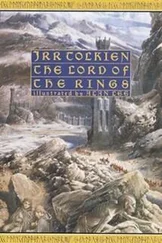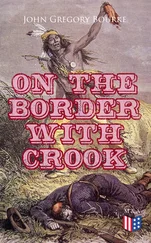On the evening of the investiture, A. V. Roe, the manufacturers of the Lancaster, threw a lavish dinner party at the Hungaria restaurant in Regent Street for the ‘Damn [ sic ] Busters following their gallant effort on the Rhur [ sic ] Dams’ 33– the budget for the dinner clearly didn’t extend to a proofreader for the menu! Given the austerity of wartime rationing, a menu including ‘Crabe Cocktail, Caneton Farci a l’Anglaise, Asperges Vertes, Sauce Hollandaise, and Fraises au Marasquin’, washed down with cocktails and ample quantities of 1929 Riesling, 1930 Burgundy and vintage port, was an astonishing banquet.
As the heroes of 617 Squadron celebrated their awards that night, Bomber Command’s war against Germany ploughed on with a raid by nearly 600 aircraft against the city of Mulheim, north of Düsseldorf. The city’s own records describe the accuracy of the bombing and the ferocity of the fires. Roads into and out of the area were cut and the only means of escape was on foot. The rescue services were overwhelmed, resulting in terrible destruction. Five hundred and seventy-eight people were killed and another 1,174 injured. Public buildings, schools, hospitals and churches were all hit. The German civilian population was paying a high price for Nazi aggression. 34
Churchill’s War Cabinet were quick to use the success of the Dams raid in the propaganda war against the enemy, and some of 617’s aircrews were sent on publicity tours that spanned the globe, spreading the message about how good the RAF’s premier squadron was through the world’s press, radio stations and cinema newsreels. The main attraction was of course the leader of the raid, Guy Gibson, who was taken off ops, stood down as commander of the squadron, and sent on a near-permanent flag-waving tour, though before he left he managed to fit in a last trip to see ‘one of the local women, a nurse, with whom he had been involved while his wife was in London’. 35Gibson also ‘wrote’ (it is possible that Roald Dahl, working as an air attaché at the British Embassy in Washington, was the actual author) a series of articles, and a draft script for a movie of the Dams raid that director Howard Hawks was contemplating, then settled down to write his account of the Dams raid and his RAF career: Enemy Coast Ahead .
Mick Martin was by now widely recognised as the finest pilot on the squadron and had a wealth of operational experience behind him, but either his relatively lowly rank of Flight Lieutenant, requiring a double promotion to get him to the rank of Wing Commander – ‘it was considered not the done thing for him to jump two ranks’ 36– or a belief among his superiors that he was a lax disciplinarian had counted against him – or perhaps the RAF ‘brass’ just didn’t want an Australian as CO. In any case, after just six weeks, he was replaced by Squadron Leader George Holden, who had taken over Guy Gibson’s crew following his departure. If Holden shared something of Gibson’s arrogance and his coolness towards NCOs, he lacked the former commander’s charisma and leadership ability, and was not generally popular with his men.
His reign as commander of 617 was not to prove a long one, and in the perhaps biased opinion of Mick Martin’s rear gunner, ‘somebody made a bad mistake’ in appointing Holden at all, since his knowledge of low flying was ‘practically nil’. 37Martin, by contrast, was ‘superb, a complete master of the low-flying technique’, and so dedicated that he continued to practise his skills every day. One new recruit to the squadron was given Martin’s formula for success at low level: ‘Don’t, if you can help it, fly over trees or haystacks, fly alongside them!’ 38His bomb-aimer, Bob Hay, was also the Squadron Bombing Leader, charged with ensuring his peers achieved the highest possible degree of accuracy.
In this, he was encouraged by Air Vice Marshal Ralph Cochrane, who on one celebrated occasion even flew as bomb-aimer with Mick Martin’s crew on a practice bombing detail. Cochrane arrived ‘all spick and span in a white flying suit’, took the bomb-aimer’s post and achieved remarkable accuracy. The results were shown to the other crews, with the implicit message that if an unpractised bomb-aimer like Cochrane could achieve such results, the full-time men on 617 Squadron should be doing a lot better themselves.
While Martin was in temporary charge, his crew had put their enforced spare time to good use by creating a garden in front of ‘the Flights’ – the place where they spent their time before training flights or ops, often hanging around waiting for the weather to clear. Having found a pile of elm branches, they erected a rustic fence with an arch at the front and the squadron number at its apex, picked out in odd-shaped pieces of wood. They scavenged, dug up and, in cases of dire necessity, bought plants and shrubs, creating a peaceful haven. Sitting there in the sunshine, inhaling the scents of flowers and listening to the birdsong and the drowsy sound of bees, they could imagine themselves far from the war … until the spell was broken as the Merlin engines of one of the squadron’s Lancasters roared into life.
As the euphoria of the Dams raid faded, the remaining men of 617 and the new arrivals brought in to replace the crews lost on the raid settled down to a period of training which extended, almost unbroken, for four months. ‘There was quite a gap between ops after the dams,’ Fred Sutherland says, ‘though I must say, I wasn’t that bothered, and in no hurry to get back on ops.’ Not all of the replacements were as experienced as the original crews. When Larry Curtis first reported to his commander, Gibson looked him over and then said, ‘I see you haven’t got any decorations, which surprises me.’
‘The day after I joined, I was on operations,’ Curtis said, with a grin, ‘which surprised me!’ 39
Born at Wednesbury in 1921, Curtis joined the RAF Volunteer Reserve from Technical College in November 1939. After training as a wireless operator/air gunner, he was posted to 149 Squadron, flying Wellingtons, and took part in the attack on the German battle cruisers Scharnhorst and Gneisenau at Brest. After completing thirty ops, Curtis was sent to a bomber training unit as a wireless instructor, but still flew on the first thousand-bomber raid to Cologne. Commissioned in January 1943, he converted to the Halifax and joined 158 Squadron. During a raid on Berlin in March 1943 his aircraft was hit by flak over the target and all four engines stopped. As the aircraft spiralled towards the ground, the crew were about to bale out, when one engine picked up and the pilot was then able to recover and start the remaining three. Having already completed two bomber tours, Curtis joined Mick Martin’s crew on 617 Squadron in July 1943 as one of the replacements for the men lost on the Dams raid. 40
One of the main attractions for a lot of the aircrew joining 617 Squadron was the chance to fly low level. After flying at 10,000 to 15,000 feet on his previous ops, the thought of operating at 100 feet or even less was thrilling for Johnny Johnson. ‘I thought, Wahey! Before I had been sitting on top of those bloody clouds and you could see nothing until you got to the target and then all you saw was rubbish. So it was absolutely exhilarating, just lying there and watching the ground going Woooof! Woooof! Wooooof! underneath me!’ Against the regulations, he always took off and landed from his position in the nose. ‘I didn’t see the point of trying to stagger back and forwards to the normal position by the spar. So I could see the runway rushing beneath my nose every time we took off, and as we landed, the runway raced up to meet me – I loved that!’ 41One of their practice routes was over the Spalding tulip fields, and Johnson remembers a guilty feeling as they flew over the fields at low level, leaving a snowstorm of multi-coloured, shredded blooms and petals in their wake, torn up by the slipstream. 42
Читать дальше












